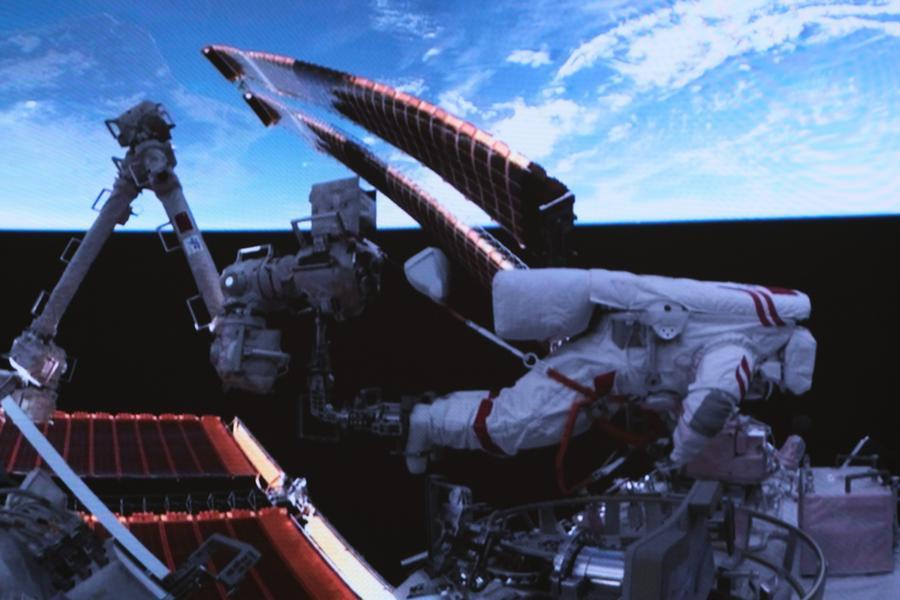This screen image captured at Beijing Aerospace Control Center on May 28, 2024 shows Shenzhou-18 astronaut Ye Guangfu performing extravehicular activities. [Photo/Xinhua]
The Shenzhou-18
crew members, who are currently on board China's orbiting space station, have been preparing themselves for the second extravehicular activities, according to the China Manned Space Agency (CMSA).
In a video footage released by the CMSA, the three astronauts Ye Guangfu, Li Cong and Li Guangsu were performing in-orbit rendezvous and docking maneuver training.
During the process, the astronauts could use the display screen to monitor the azimuth angle and pitch angles of the target spacecraft, track the relative distance and speed between the spacecraft and the target, and hone their operational skills in speed and attitude control using translational and attitude hand controllers.
The crew also conducted cardiopulmonary exercise function tests to assess their cardiovascular and respiratory systems' functional and regulatory capabilities.
The trio performed a slew of space science experiments and tests during the past two weeks, according to the CMSA.
They conducted regular operations including burner replacement and vacuuming of exhaust gases in the combustion cabinet.
In 2023, China successfully performed the first in-orbit ignition test in the combustion cabinet. Over the past year, multiple combustion experiments have been completed, promising to yield significant scientific results. These endeavors are pivotal for advancing combustion theory and developing advanced combustion technologies.
The crew also installed a sliding track positioning component to the science glovebox. This facility provides a sealed and clean environment crucial for conducting space science experiments.
They replaced the experimental samples in the fluid physics experiment cabinet. This cabinet facilitates in-orbit microgravity experiments on the dynamic processes, diffusion processes, phase transitions, and self-organization behaviors of various fluid systems.
In addition, the astronauts conducted an in-orbit electroencephalogram (EEG) test. The EEG signal testing and analysis could shed light on the physiological mechanisms underlying changes in astronauts' cognitive abilities during long-term spaceflight. This serves as an important testing method in in-orbit experimental studies of space ergonomics and brain science.
On April 25, China launched the Shenzhou-18 manned spaceship, sending three astronauts to its orbiting Tiangong space station for a six-month mission. They completed their first spacewalk on May 28.





